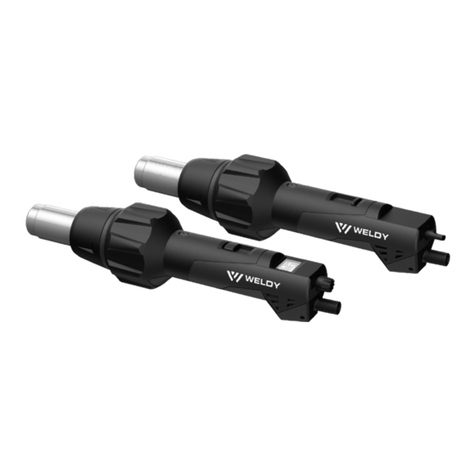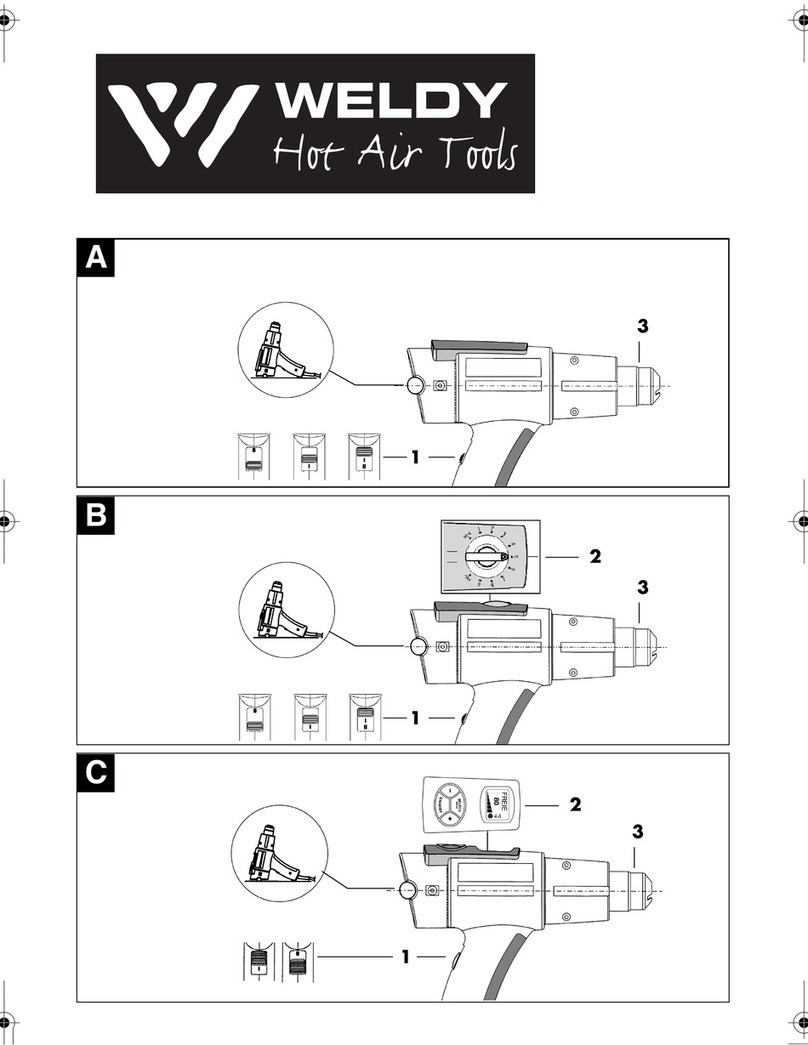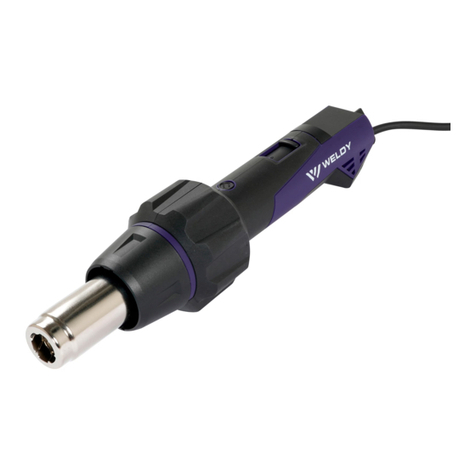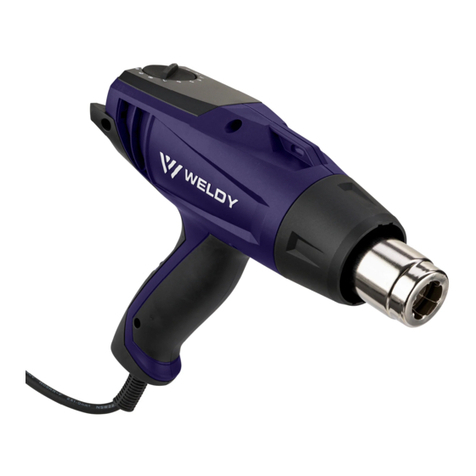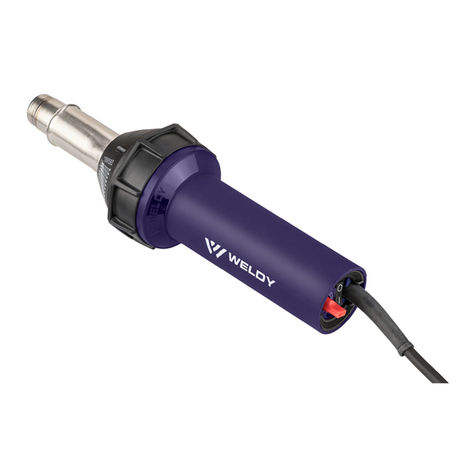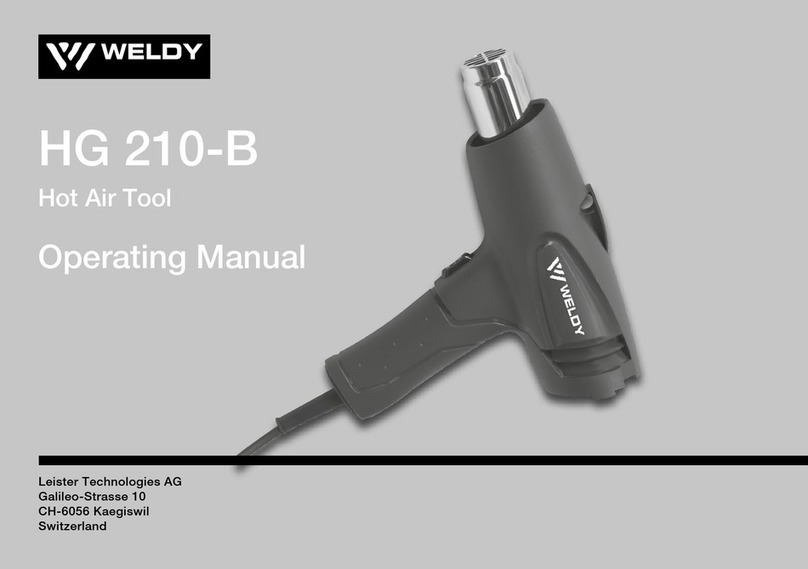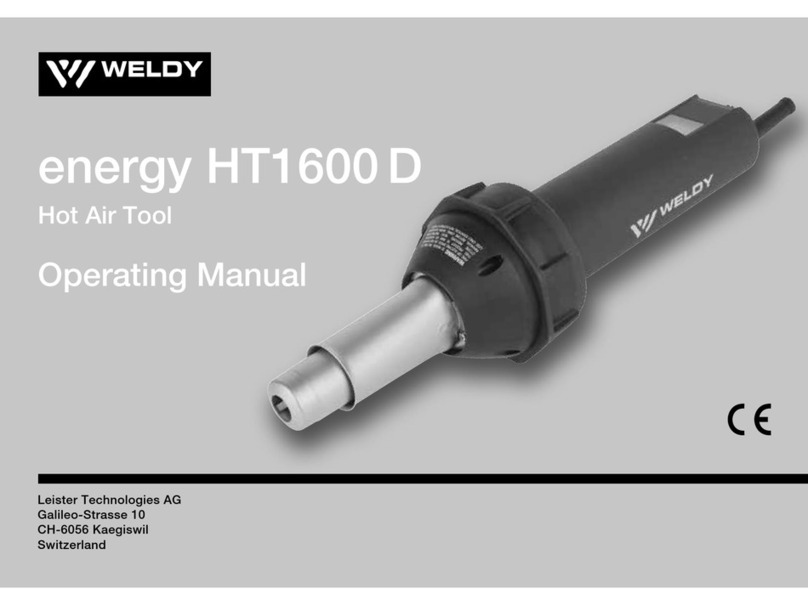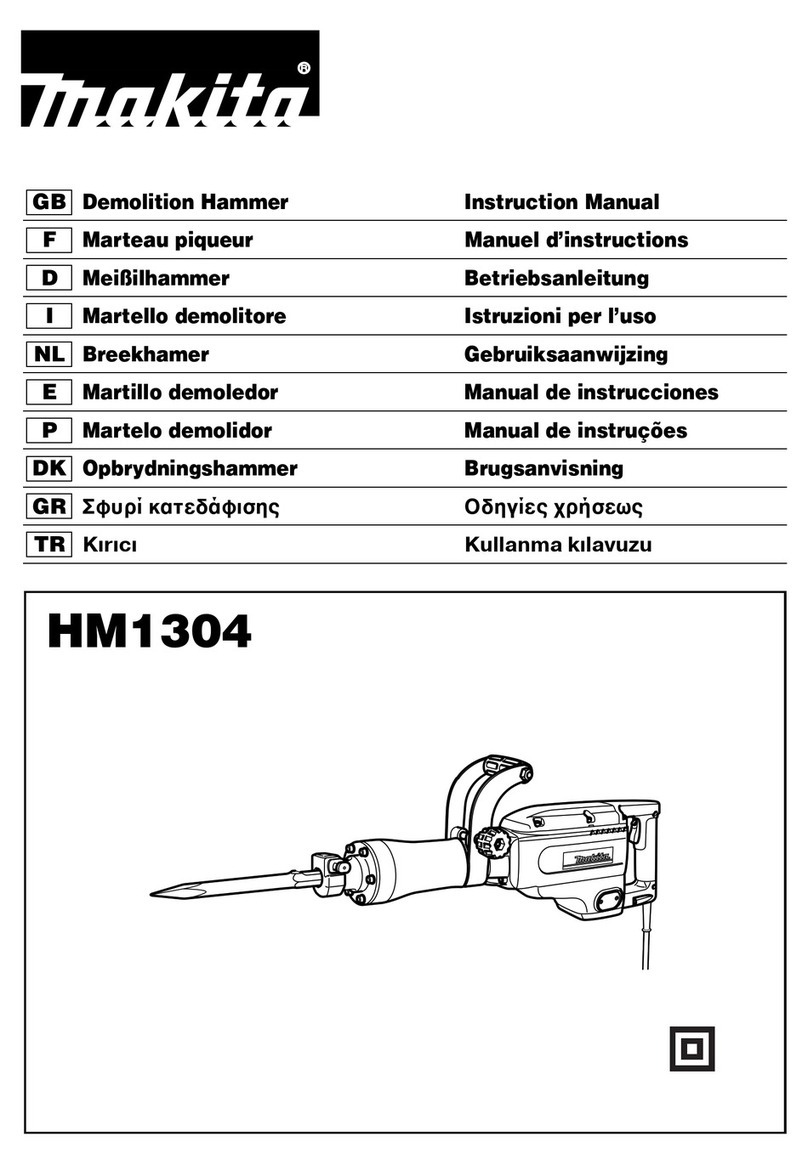
5
Translation of the Original User Manual
Important safety instructions
This appliance has a polarized plug (one blade is wider than the other). To reduce the risk
electrician. Do not modify the plug in any way.
loca-tions. The ignition of these materials may not be readily apparent and could result in
When working in these locations, keep the gun moving in a back-and-forth motion. Linger
-
ing or pausing in one spot could ignite the panel or the material behind it.
Read these instructions
Warning: Extreme care should be taken when stripping paint. The peelings, residue and
vapors of paint may contain lead, which is poisonous. Any pre-1977 paint may contain
lead and paint applied to homes prior to 1950 is likely to contain lead. Once deposited on
surfaces, hand to mouth contact can result in the ingestion of lead. Exposure to even low
levels of lead can cause irreversible brain and nervous system damage; young and unborn
children are particularly vulnerable.
Before beginning any paint removal process you should determine whether the paint
you are removing contains lead. This can be done by your local health department or by a
professional who uses a paint analyzer to check the lead content of the paint to be removed.
LEAD-BASED PAINT SHOULD ONLY BE REMOVED BY A PROFESSIONAL AND SHOULD NOT
BE REMOVED USING A HEAT GUN.
Persons removing paint should follow these guidelines:
1. Move the work piece outdoors. If this is not possible, keep the work area well ventilated.
Open the windows and put an exhaust fan in one of them. Be sure the fan is moving
the air from inside to outside.
2. Remove or cover any carpets, rugs, furniture, clothing, cooking utensils and air ducts.
3. Place drop cloths in the work area to catch any paint chips or peelings. Wear protective
clothing such as extra work shirts, overalls and hats.
sealing doorways with drop cloths.
5. Children, pregnant or potentially pregnant women and nursing mothers should not be
present in the work area until the work is done and all clean up is complete.
been approved by the Occupational Safety and Health Administration (OSHA), the
National Institute of Safety and Health (NIOSH), or the United States Bureau of Mines.
7. Use caution when operating the hot air tool. Keep the heat gun moving as excessive
heat will generate fumes which can be inhaled by the operator.
8. Keep food and drink out of the work area. Wash hands, arms and face and rinse mouth
before eating or drinking. Do not smoke or chew gum or tobacco in the work area.
clean all walls, sills and any other surface where paint or dust is clinging. DO NOT
SWEEP, DRY DUST OR VACUUM. Use a high phosphate detergent or trisodium phos
-
phate (TSP) to wash and mop areas.
10. At the end of each work session put the paint chips and debris in a double plastic bag,
close it with tape or twist ties and dispose of properly.
11. Remove protective clothing and work shoes in the work area to avoid carrying dust into
that is then washed with the work clothes. Wash hair and body thoroughly with soap
and water.
SAVE THESE INSTRUCTIONS
DE
EN
FR
ES
PT
IT
NL
DA
SV
NO
FI
EL
TR
PL
HU
CS
SK
RO
SL
BG
ET
LT
LV
RU
JA
ZH
AR
TH
KO
